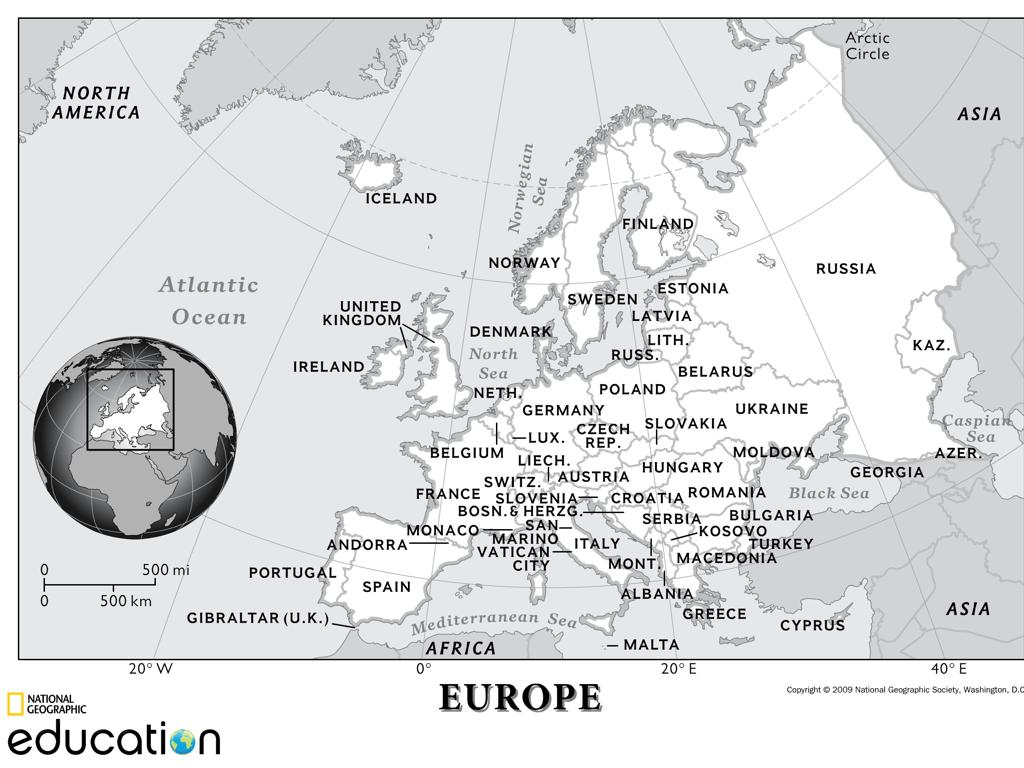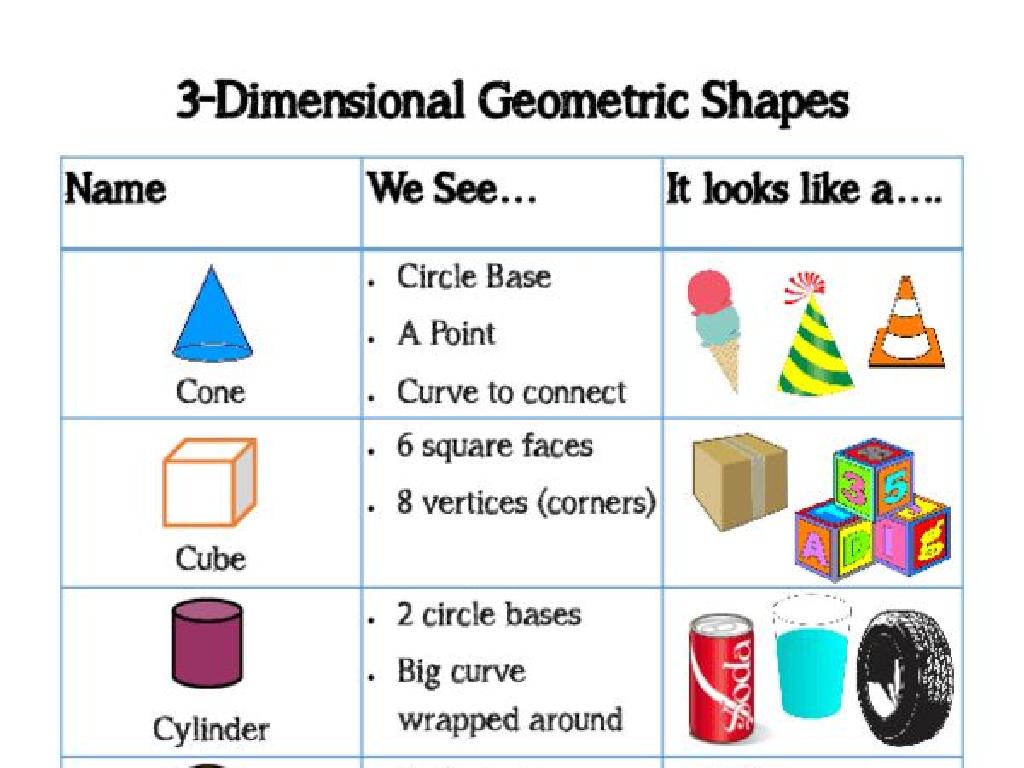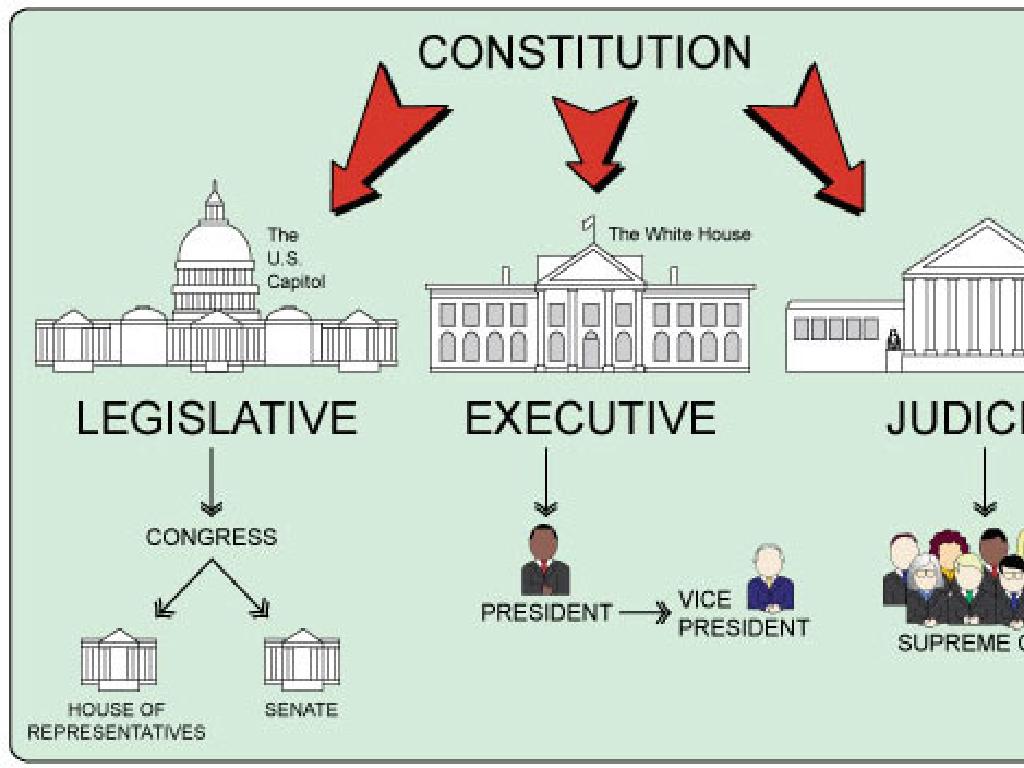Classify Quadrilaterals Ii
Subject: Math
Grade: Seventh grade
Topic: Two-Dimensional Figures
Please LOG IN to download the presentation. Access is available to registered users only.
View More Content
Classifying Quadrilaterals
– Define quadrilaterals
– A quadrilateral is a 4-sided polygon.
– Characteristics of 2D shapes
– Look for sides, angles, and parallel lines.
– Classifying shapes
– Sort shapes based on properties.
– Importance of classification
– Helps in geometry and real-life applications.
|
Begin the lesson by defining quadrilaterals as four-sided polygons, ensuring students understand the basic terminology. Discuss the various characteristics that can be observed in two-dimensional shapes, such as the number of sides, types of angles, and whether they have parallel or perpendicular lines. Emphasize the process of classifying shapes based on these properties, and explain why classification is a crucial skill in geometry. It aids in problem-solving and has practical applications in fields such as engineering, architecture, and design. Encourage students to think about where they see quadrilaterals in their daily lives and how different types are used for different purposes.
Understanding Quadrilaterals
– Define a quadrilateral
– A polygon with four edges (sides) and four vertices (corners).
– Quadrilaterals have four sides
– Quadrilaterals have four angles
– Sum of interior angles is 360°
– Adding all angles in any quadrilateral will equal 360 degrees.
|
Begin the lesson by defining a quadrilateral as a type of polygon that has exactly four sides and four vertices. Emphasize that the name itself gives a clue: ‘quad’ meaning four and ‘lateral’ meaning sides. Highlight that in addition to having four sides, quadrilaterals also have four angles. A key property to remember is that the sum of the interior angles in any quadrilateral is always 360 degrees. This is a fundamental concept that will help students understand more complex geometry topics. Use examples of different quadrilaterals (like squares, rectangles, and trapezoids) to illustrate the point and provide a visual understanding of the concept.
Classifying Quadrilaterals
– Quadrilateral types overview
– Squares, Rectangles, Rhombuses, Trapezoids, Parallelograms
– Unique properties of each
– Squares have 4 equal sides, rectangles have 4 right angles
– Quadrilaterals with equal sides
– Squares and rhombuses have all sides equal
– Quadrilaterals with parallel sides
– Parallelograms and rectangles have parallel opposite sides
|
This slide introduces students to the classification of quadrilaterals, which are four-sided polygons. Each type of quadrilateral has its own set of properties that distinguishes it from others. For example, squares have four equal sides and four right angles, making them a special case of rectangles and rhombuses. Rectangles are characterized by having four right angles, while rhombuses have four sides of equal length but not necessarily right angles. Trapezoids have only one pair of parallel sides, differentiating them from parallelograms, which have two pairs of parallel sides. Encourage students to draw each type and label their properties for a better understanding. This foundational knowledge will be crucial for solving problems related to two-dimensional figures.
Properties of Quadrilaterals
– Quadrilateral sides and angles
– Four sides, angles sum to 360°
– Quadrilateral symmetry
– Lines of symmetry vary by shape
– Identifying quadrilaterals
– Use properties to determine type
– Examples: squares vs. rectangles
– Squares have 4 equal sides, rectangles have equal opposite sides
|
This slide aims to help students understand the basic properties that define quadrilaterals, including the characteristics of their sides, angles, and lines of symmetry. Emphasize that all quadrilaterals have four sides and that the sum of their internal angles is always 360 degrees. Discuss the concept of symmetry in quadrilaterals and how it differs among various shapes. Teach students how to identify each type of quadrilateral by its properties, such as a square having all sides equal in length and rectangles having only opposite sides equal. Use visual examples to illustrate these differences, and encourage students to practice by drawing their own quadrilaterals and identifying their properties. This foundational knowledge will be crucial for understanding more complex geometric concepts.
Classifying Quadrilaterals
– Properties of quadrilaterals
– Sides, angles, and parallel lines help identify types
– Parallelogram vs. trapezoid
– Compare two shapes: opposite sides parallel?
– Group activity: Shape classification
– Work in groups to classify various quadrilaterals
– Discuss findings as a class
– Share your group’s classifications with the class
|
This slide is aimed at helping students use specific properties to classify quadrilaterals. Start by reviewing the properties such as the number of sides, the types of angles, and whether or not they have parallel or equal sides. Provide clear examples to differentiate between a parallelogram (both pairs of opposite sides are parallel) and a trapezoid (only one pair of opposite sides is parallel). For the group activity, provide a diverse set of quadrilateral shapes for students to classify. Encourage collaboration and discussion within groups to decide on the classification of each shape. After the activity, have a class discussion to review the classifications and address any misconceptions. This will reinforce their understanding and ability to distinguish between different types of quadrilaterals.
Hierarchy of Quadrilaterals
– Quadrilateral family tree
– Understand the relationships between different quadrilaterals
– Parallelograms identification
– Recognize shapes like rectangles, rhombi as parallelograms
– Is every square a rectangle?
– Explore why squares fit the definition of rectangles
– Discuss quadrilateral properties
|
This slide introduces students to the concept of the quadrilateral family tree, which helps them understand the relationships and hierarchy between different quadrilateral shapes. Emphasize that all squares, rectangles, rhombuses, and rhomboids are parallelograms because they have two pairs of parallel sides. Encourage a discussion on whether a square can be considered a rectangle, highlighting that squares meet all the criteria for rectangles (four right angles and opposite sides equal) but also have all sides equal, making them a special type of rectangle. Use this opportunity to reinforce the properties of quadrilaterals and how they relate to each other. Provide examples and encourage students to draw their own quadrilateral family trees to visualize the relationships.
Quadrilaterals in the Real World
– Spot quadrilaterals in our surroundings
– Look for objects with four sides, like windows or tables.
– Practical uses of quadrilateral knowledge
– Knowing shapes helps in fields like engineering and design.
– Discuss everyday quadrilateral objects
– Share examples like books, monitors, and rugs.
– Understand quadrilateral properties
|
This slide aims to help students recognize quadrilaterals in their daily lives and understand their practical applications. Encourage students to observe their environment and identify objects that have four sides and four corners, which are quadrilaterals. Discuss how knowledge of quadrilateral properties is beneficial in real-life scenarios, such as architecture, art, and various design fields. Facilitate a class discussion where students can share and discuss objects they encounter daily that are quadrilaterals, reinforcing their understanding of the shapes’ properties and enhancing their ability to classify them. This activity will also help in developing their spatial awareness and geometric reasoning skills.
Class Activity: Quadrilateral Scavenger Hunt
– Find quadrilaterals around you
– Work in pairs on the worksheet
– Classify each quadrilateral
– Is it a square, rectangle, rhombus, or trapezoid?
– Present findings to the class
|
This interactive activity encourages students to apply their knowledge of quadrilaterals by finding real-life examples in their immediate environment. Students should work in pairs to foster collaboration. Provide a worksheet that guides them to identify, classify, and note down the properties of each quadrilateral they find. They should determine whether each shape is a square, rectangle, rhombus, or trapezoid based on its sides, angles, and symmetry. After the scavenger hunt, each pair will present their findings, explaining how they classified each shape. This will reinforce their understanding and allow them to demonstrate mastery of the topic. Possible variations of the activity could include finding quadrilaterals in magazines, drawing them from memory, or creating them with art supplies.
Quadrilaterals Review & Quiz
– Review quadrilateral properties
– Take a pop quiz on quadrilaterals
– Identify shapes and their characteristics quickly
– Classify different quadrilaterals
– Use properties to determine the specific type
– Discuss quiz answers together
|
This slide is designed to reinforce the students’ understanding of quadrilaterals by reviewing their properties and then assessing their knowledge through a pop quiz. The quiz should include various quadrilaterals such as squares, rectangles, rhombuses, and trapezoids. After the quiz, facilitate a class discussion where students can explain their reasoning for classifying each shape, which will help solidify their understanding. Provide guidance and clarification as needed. This interactive approach encourages active participation and helps identify areas that may require further review.
Homework: Exploring Quadrilaterals
– Draw five unique quadrilaterals
– Classify each quadrilateral
– Is it a square, rectangle, rhombus, etc.?
– Note down each one’s properties
– Consider angles, sides, and symmetry
– Prepare to present your findings
|
This homework assignment is designed to reinforce the students’ understanding of the different types of quadrilaterals and their properties. Students should be encouraged to be creative in their drawings while accurately representing each category of quadrilateral. They should focus on identifying and noting the defining properties such as the lengths of sides, types of angles, and axes of symmetry. In the next class, students will have the opportunity to share their work, which will help them to articulate their understanding and learn from their peers’ perspectives. Provide examples of properties for each type of quadrilateral to guide them in their homework.






